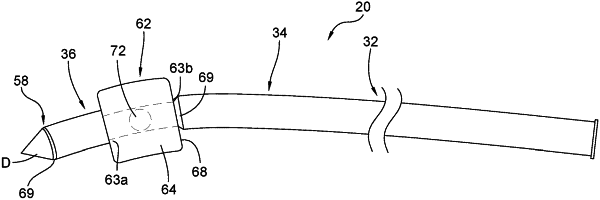| CPC A61B 17/0218 (2013.01) [A61B 90/39 (2016.02); A61M 25/0041 (2013.01); A61M 25/0045 (2013.01); A61M 25/10 (2013.01); A61B 2017/00247 (2013.01); A61B 2017/00557 (2013.01); A61B 2017/00845 (2013.01); A61B 2017/00955 (2013.01); A61B 2017/0225 (2013.01); A61B 2017/0237 (2013.01); A61B 2017/3486 (2013.01); A61B 2090/3925 (2016.02); A61B 2090/3966 (2016.02); A61M 2025/0047 (2013.01); A61M 25/0052 (2013.01); A61M 25/0054 (2013.01); A61M 25/0108 (2013.01); A61M 25/0662 (2013.01); A61M 2025/1079 (2013.01); A61M 2025/1093 (2013.01)] | 15 Claims |

|
1. A method of accessing a pericardial cavity of a patient via a right atrial appendage of the patient with an introducer sheath, comprising:
inserting the introducer sheath into the inferior vena cava of the patient, the introducer sheath having a curved medial portion and a linear distal portion, the linear distal portion including an indented portion around the entire circumference and a balloon in a deflated condition within the indented portion so that no part of the balloon extends beyond a maximum outer diameter of the linear distal portion or outside of the indented portion;
moving the introducer sheath to the right atrium of the heart of the patient to a position adjacent the right atrial appendage;
passing the sheath through the right atrial appendage to the pericardial cavity so that the indented portion is within the pericardial cavity;
inflating the balloon within the pericardial cavity, wherein the inflating does not enlarge a hole through the right atrial appendage through which the sheath passes; and
engaging the balloon with tissue of the right atrial appendage that faces the pericardial cavity.
|